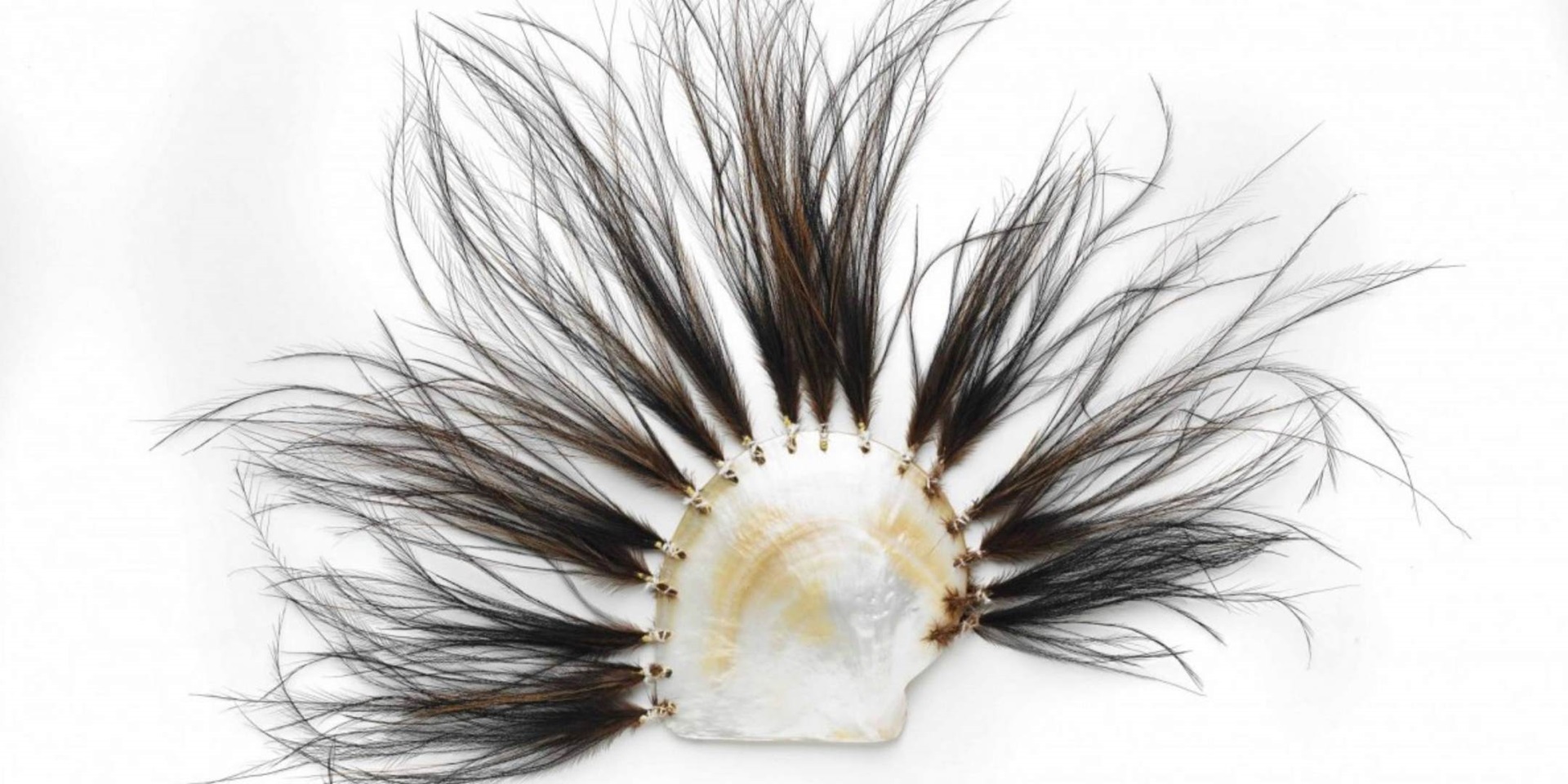
International interest in Australian Indigenous culture is strong and growing, and the museum’s programs are helping to take Indigenous artworks to the world. Saltwater barks from our collection travelled to the Istanbul Biennial last year, and now a selection of shell artworks are on their way to Monaco to be exhibited at the principality’s Oceanographic Museum.
Shell bracelet made by artist Lola Greeno. ANMM Collection 00045959.
With more than 25,000 kilometres of shoreline, the littoral zone of the Australian continent and islands is vast and varied. In places it reaches out to the horizon in tidal flats or coral reefs and in others it is formed by steep cliffs and deep waters. Cut by rivers, creeks and estuaries that have shaped the shores as places of sustenance, all this saltwater and freshwater country is rich with an array of shimmering, iridescent and diversely shaped shells.
Used in highly creative and versatile ways, shells continue to be important in cultural and artistic practice in contemporary Indigenous communities
For tens of thousands of years, shells have sustained Indigenous Australians – as a food source, as tools for fishing, hunting or cutting, and as cultural objects. They have been at once practical, workable items and prized artefacts of beauty, imbued with cultural and spiritual narratives and significance.
Necklace from a Waia family adult male (dhibal) headdress as part of a dance costume. ANMM Collection 00031032. Photograph by Andrew Frolows / Australian National Maritime Museum.
A global obsession with pearls has been archived in literature and ornaments down the ages; they are prized for their beauty, and symbolise spirit (for their glistening ability to flash light) and the exotic (one meaning of the word ‘orient’ refers to their luminous lustre). Such luminescent properties hidden and contained inside crusty dark casings and birthed from the ocean depths are obvious metaphors for transformation and transcendental or heavenly/ancestral power.
Lustrous shells have also been part of Indigenous communities far from the shore, traded hundreds of kilometres inland and forming part of cultural practices in remote regions across Australia. Used in highly creative and versatile ways, shells continue to be important in cultural and artistic practice in contemporary Indigenous communities.
The shell objects and artefacts in the exhibition Living Waters draw on artists from three regions around Australia. The large and iridescent pearl shell that is found in coastal waters across northern and western Australia forms the basis of artists’ work from the Kimberley in Western Australia as well as the Torres Strait Islands, hundreds of kilometres to the east at the tip of far north Queensland. Far to the south, on the north-east coast of Tasmania, much smaller shells are used in intricate and delicate necklaces and bracelets. Despite the very different shells and vast distances between them, these artworks are united by the importance of shells in the cultural and artistic palettes of the communities.
